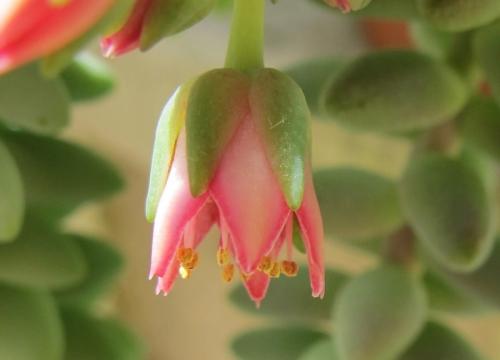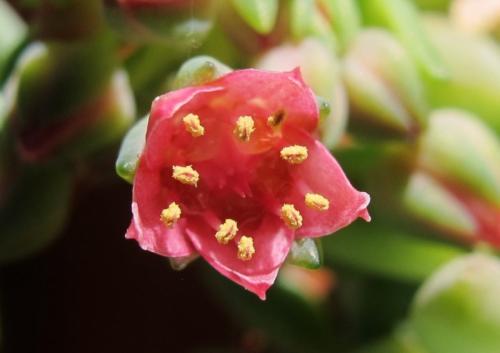BURRITO Moran, 1977
Distribution : Mexico (Veracruz)
Description ( by 't Hart & Bleij in IHSP, 2003) :
Glabrous perennial herbs with stems branching freely near the base, first erect, then pendent, glaucous-green, 50 cm long or more.
Leaves crowded, in 5 obvious spirals, elliptic, obtuse, turgid, subterete, bluish-glaucous, 12 - 16 x 6 – 9 mm, 5 - 7 mm thick, flowering branches pendent.
Inflorescences corymbs, pedicels 8 - 12 mm, slightly thickened upwards.
FIowers 5-merous, sepals broadly sessile, connate, unequal, triangular-ovate, subacute to obtuse, 5 – 7 x 6 - 8 mm, petals basally connate, ovate, narrowly rounded, subcucullate, subdorsally mucronate, pink with deeper pink irregular lines, 7 - 8 mm, filaments pink, anthers light yellow, nectar scales broad, emarginate, deep pink.
Cytology : 2n = 69
Closely related to S. morganianum.
Note :
In Cactus and Succulent Journal US 89(1), 2017, Myron Kimnach reduced Sedum burrito to a cultivar of S. morganianum. He wrote : "Sedum burrito, published by Reid Moran in 1977 as an ally of S. morganianum Walther, differs primarily in its smaller leaves. In February, 1988, Doug Anderson, a wholesale supplier of succulents in Junction City, Oregon, obtained a plant of S. morganianum from the now deceased Paul Hutchison. Sometime later he observed a stem of Sedum burrito growing amidst stems of S. morganianum. However, he did not take a photo of them before removing the S. burrito stem for propagation. Around 2013 he did bring me cuttings of each and I could see that each was properly identified, so 'Burrito' is apparently a vegetative sport. Although the plant is sometimes listed as S. morganianum 'Burrito' on the Internet and in catalogs, I think a proper formal combination would be desirable."
Discussion :
While there is no doubt that C. ‘Baby’s Surprise’ is a vegetative sport of C. ‘Baby’s Necklace’ because their flowers are the same, this is not at all correct for S. burrito and S. morganianum - their flowers are distinctly different as the illustration in Moran’s description of Sedum burrito proves :
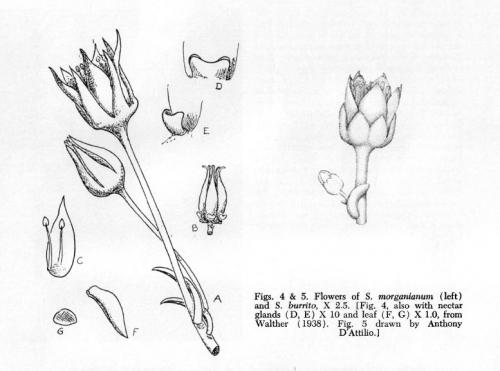
From the First Description of Sedum burrito by Reid Moran in Cactus and Succulent Journal US 49:266-268, 1977.
It is obvious that S. burrito as described by Moran cannot possibly be a vegetative sport of S. morganianum. Whether the burrito-like stem found by Anderson is identical with S. burrito Moran or a vegetative sport of S. morganianum is unknown because flower photos are completely lacking.
Conclusion :
In view of the fact that the distinctly different flowers of the two Sedum species rule out any possibility of one being a vegetative sport of the other, Kimnach's new combination lacks any sound basis and is to be ignored.
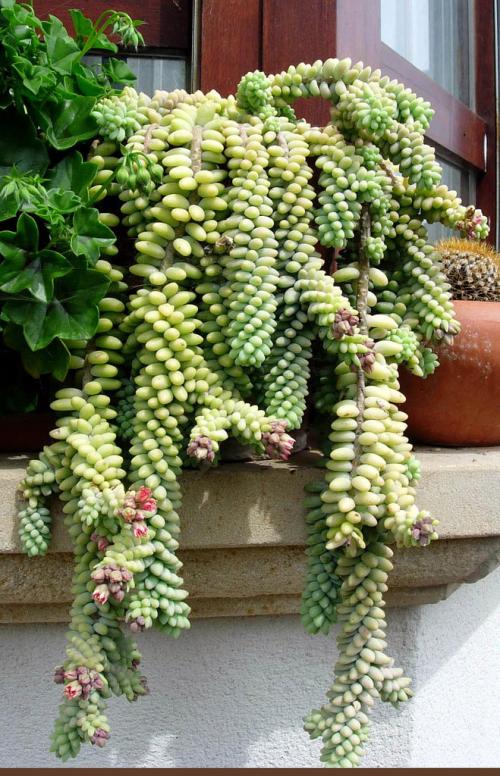
Photo Lourdes Izquierdo
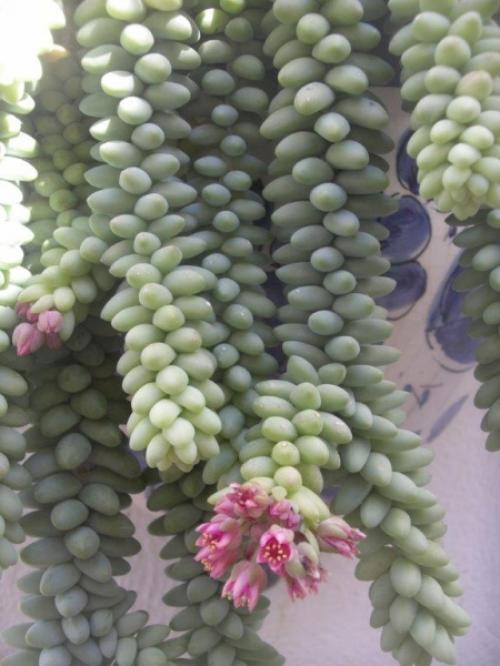
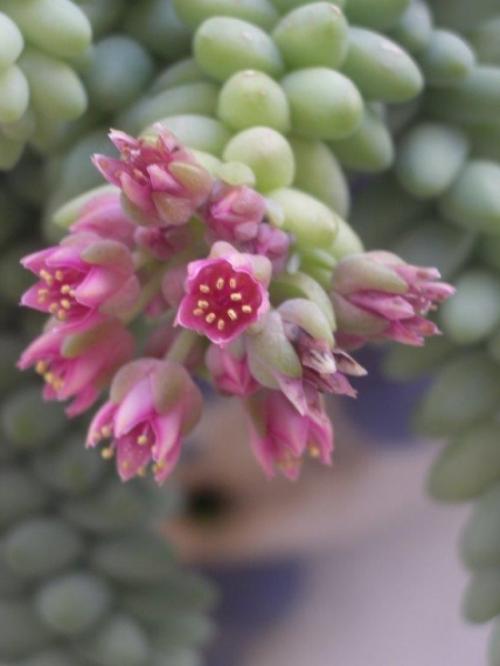
Photos Mateo Lichtenstein
